Steam mopping vs regular mopping - which to choose for a cleaner home, according to experts
We’ve got the answers


A mop is a mop, right? Well, not quite. Although any mop will ultimately provide you with squeaky clean floors, there’s a big difference between steam mopping and regular mopping.
Yes, the best mops come in so many different shapes and forms. From the traditional Komodor-esque mop with cotton strands and a matching bucket to spray mops and modern steam-cleaning mops, these cleaning tools offer the same result but very different processes. But does one trump the other? And which is better for a clean home?
To help you understand which mop wins in the steam mopping vs regular mopping debate, we’ve put these two cleaning tools against each other. And with the help of expert knowledge, we’ve been able to choose an overall winner.
Steam mopping vs regular mopping
‘The choice between steam and regular mopping largely depends on your specific cleaning needs, floor type, and personal preferences,’ explains Ava Wilson, Chief Editor at Unclutterer.
That’s why we’ve outlined everything you could possibly need to know about steam mopping vs regular mopping in regards to the differences between them, the ease of use, and the affordability. With this information in your back pocket, you should be able to make the right choice for you and your home.

Taking the prize as the 'best overall' steam cleaner in our guide, this Vax upright steam mop has a triangular floorhead, two cloths, and a carpet glider to make cleaning an absolute breeze. It even has a pop-out handheld to clean other areas of your home.
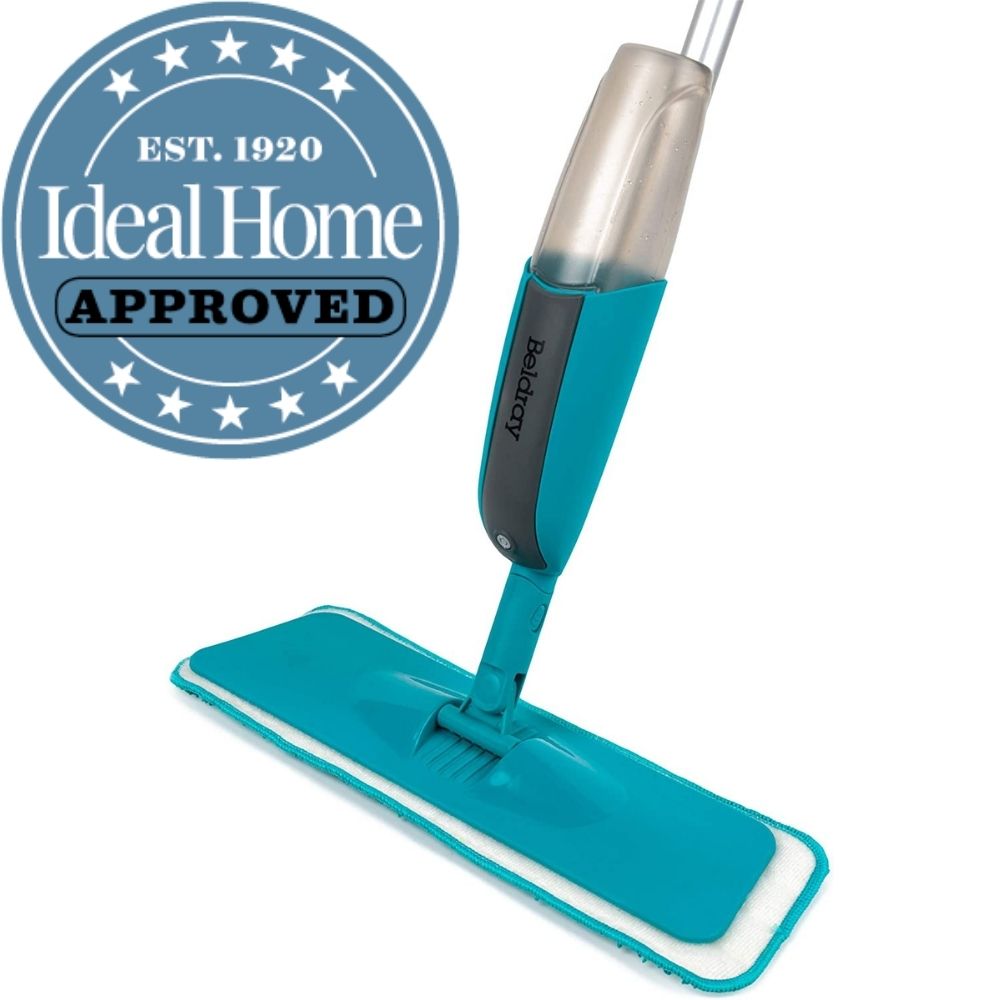
Crowned our 'best overall' mop in our guide, this Beldray offering is a budget-friendly spray mop that can be used on every floor type, from from tiles to vinyl and laminate. It even comes with two machine washable mop heads.
Steam mopping vs regular mopping: What’s the difference?
Ultimately, the main difference between a steam mop and a regular mop can be found in the name.
Ava says, ‘Steam mops use electricity to heat water to a boiling point, creating steam that is then directed out of a mop head onto the floor surface. The steam helps loosen dirt and grime, which the mop pad absorbs.’
Sign up to our newsletter for style inspiration, real homes, project and garden advice and shopping know-how
‘Regular mopping involves using a mop and a bucket of water mixed with a cleaning solution. The mop is soaked in the solution, wrung out, and then used to manually scrub the floor.’
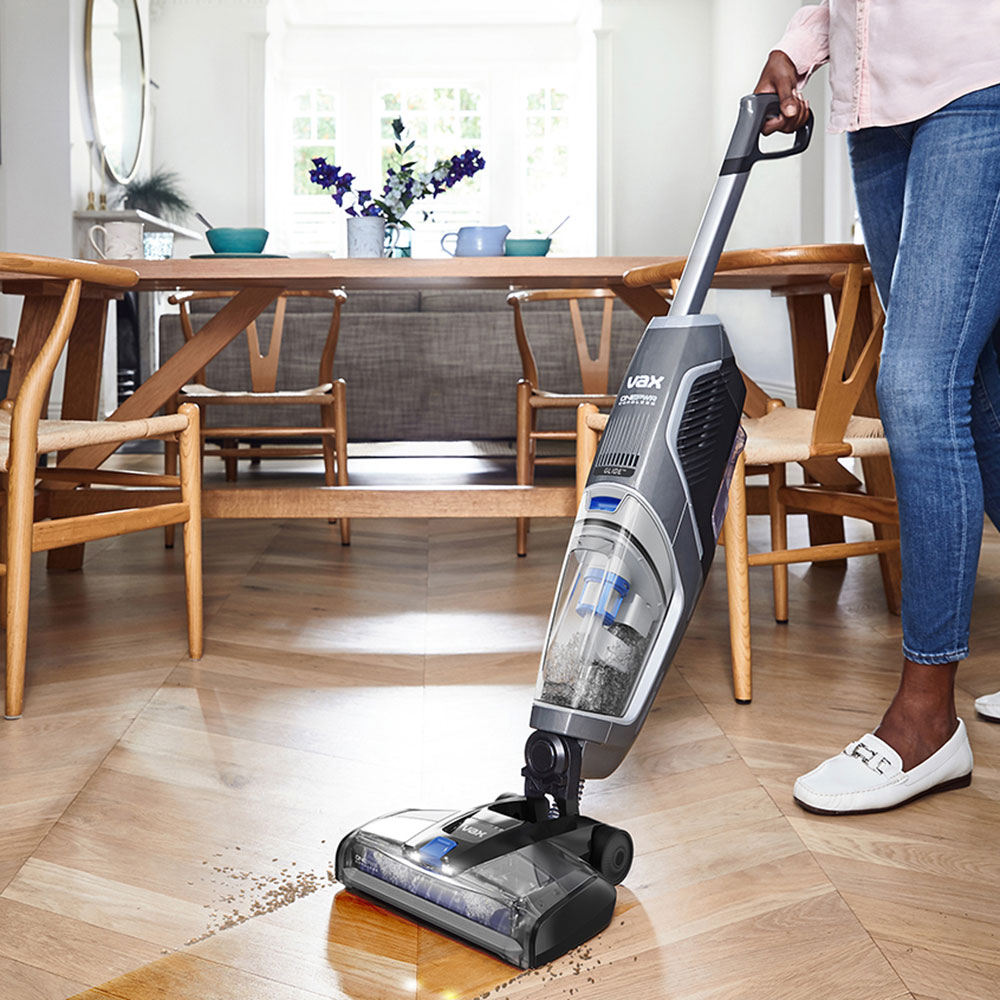
Of course, you can also buy spray mops, like the MR.SIGA Professional Microfibre Mop from Amazon, which you can fill with a cleaning solution that will be expelled as soon as you pull the trigger.
And while both steam mops and regular mops will provide you with clean floors, it’s fair to say that they are two very different cleaning tools. One is an electrical appliance, and the other is not.

Ava Wilson, Unclutterer’s Chief Editor with 25 years in cleaning, started with a mop and now leads a team of 20. Merging hands-on experience with management expertise, she transforms cleaning into inspiring lessons. Ava's eco-focused insights make Unclutterer a go-to for sustainable cleaning wisdom.
Steam mopping vs regular mopping: Which is more effective at cleaning?
Using either a steam mop or regular mop will result in cleaner floors, but it’s generally agreed that steam mopping gets the job done more effectively - and in a more eco-friendly fashion.
A spokesperson at Nationwide Cleaning told us, ‘Steam mopping is like a superhero when it comes to cleaning floors. Instead of chemicals, it uses hot steam to kill germs and dirt. Plus, the steam gets into tricky spots, providing you with the peace of mind that every surface has been properly cleaned.’
On the other hand, a regular mop is only as good as the cleaning solution that’s used at the same time. And if you don’t use the correct cleaning solution, you could be wiping wet germs and grime around your home.
Not only that, but Joyce French, cleaning expert at HomeHow.co.uk, also adds, ‘If your floor is heavily soiled, you will need to change the water often, which is tiring and time-consuming.’
It’s also important to note that many steam mops aren’t restricted to hard flooring, either. In fact, we’ve crowned the Vax Steam Fresh Combi S86-SF-C the ‘best steam cleaner’ in our mops guide due to its carpet-cleaning qualities.
Our Ideal Home tester, Caramel Quin, gave this mop an impressive five-star review, and she was particularly impressed with the carpet glider attachment.
She said, ‘A dial on the side of the body lets you decide whether to use detergent or not. I used it with the floorhead and carpet glider to clean the tide marks on an old, colourful rug. It worked to great effect.’
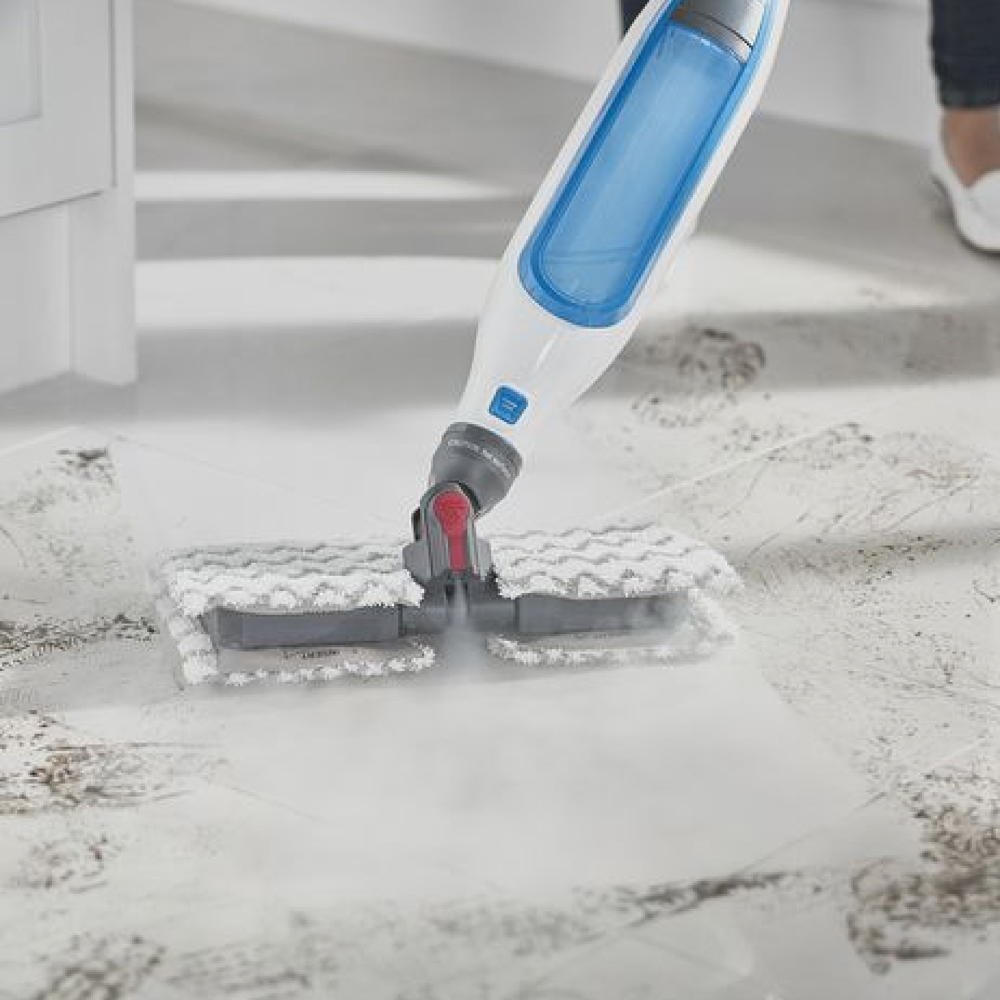
And while a rug is something you can clean with a steam cleaner, there are also things that you shouldn’t clean with a steam cleaner.
‘Steam mops are not suitable for any unsealed flooring such as hardwood and should not be used on laminate flooring. The high temperature and amount of moisture they use can damage these types of flooring by warping or by detaching the veneer of laminate boards,' explains Joyce.
This isn't something you need to worry about with a regular mop. Joyce adds, ‘A regular mop can be used on any floor surface as it is easy for you to control how wet the mop head gets. This means that it can be used on any hard floor surface, even laminate flooring, as long as you wring it out sufficiently.’
In fact, all you need to do with a regular mop is to clean the mop head properly and replace it when it shows signs of wear and tear.
Steam mopping vs regular mopping: Which is easier?
If you’re toying between a steam mop and a regular mop, it’s important to consider your level of dexterity. After all, both mops are extremely easy to use, and the instructions are fairly self-explanatory. They do have their downsides, though.
‘For people with mobility issues, carrying a heavy bucket of water around to mop the floors can be difficult,’ explains Joyce. ‘The steam mop has a detachable water tank, and once it’s filled, you simply push the appliance as you would a vacuum cleaner.’
In fact, when our reviewer tested the Vileda Looper out for herself, she dubbed it the ‘best steam cleaner for limited mobility’ thanks to its incredible lightweight design and easy manoeuvrability.
But with every positive comes a negative, and one thing you’ll need to consider when deciding between a steam mop or a regular mop is that a steam cleaner is an electrical appliance.
Joyce says, ‘As a steam mop needs power, you’ll only be able to mop as far as the lead will go before you have to unplug it and locate another socket. This doesn’t happen with a regular mop, which isn’t restricted by this.’
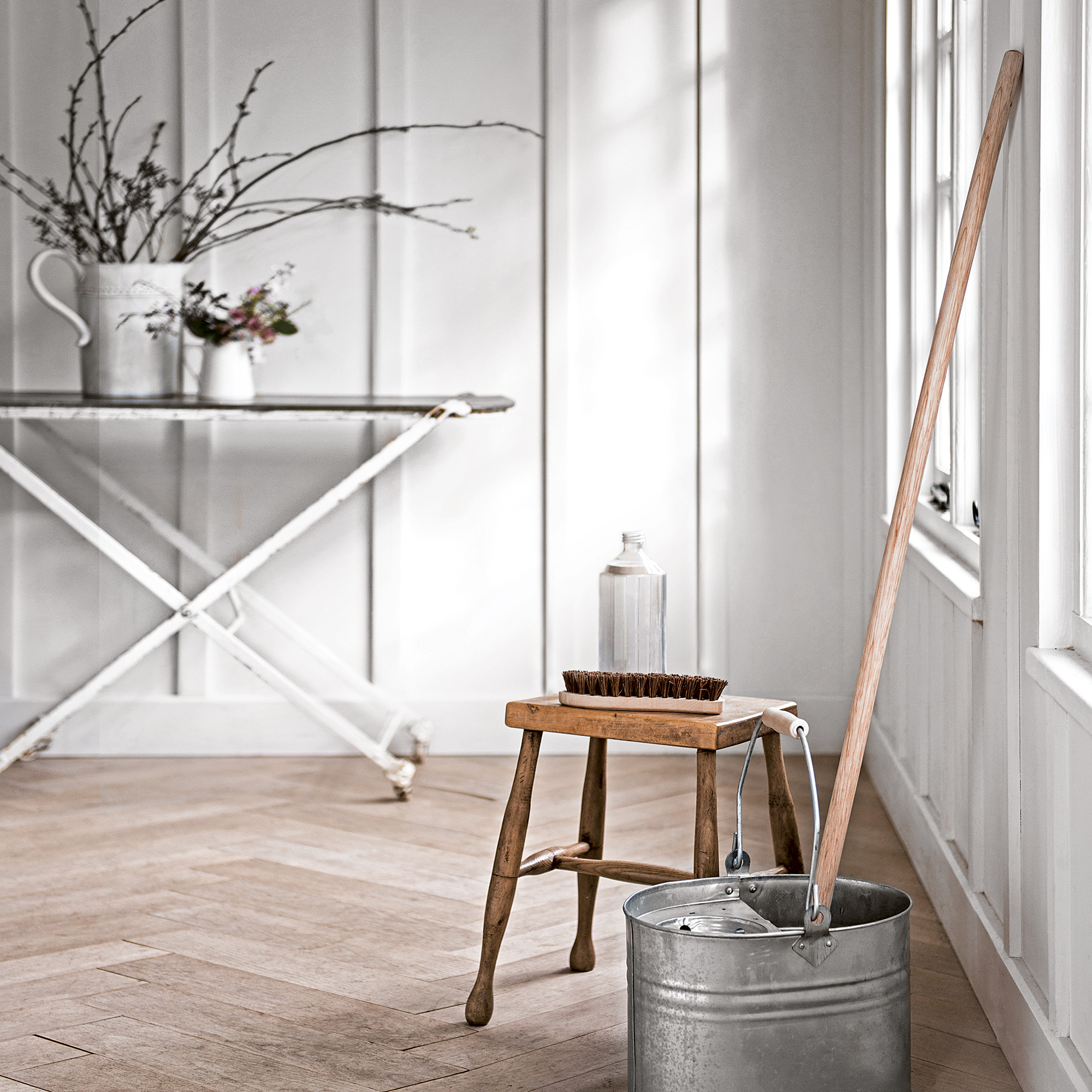
Steam mopping vs regular mopping: Which is easier to store?
Buying a new home cleaning appliance is all well and good until you realise that you don't have the space to store it. If you have a small home with limited storage options, this can severely impact your buying decision. So, which is easier to store?
Well, you probably don’t need us to tell you that steam mops are generally much larger than regular mops. Similar to an upright vacuum cleaner, their large head and handles normally have to stand upright, and they are rarely removable.
This is where regular mops can reign supreme. If you buy a spray mop rather than a mop with a bucket, you can slide it into any storage crevice or stand it upright in any corner. Many of the heads are also removable, so you can even store them in two places if you lack space.
In fact, my lack of storage is the exact reason why I choose to use a regular mop rather than a steam mop. I have the Beldray Duplex Space Saving Flat Head Mop and Bucket Set, designed for those with little space.
By some kind of miracle, I’ve even managed to find space for it in my under-the-stairs cupboard, which currently houses my freezer and also moonlights as a coat rack, shoe storage area, air fryer and vacuum cleaner storage cupboard.
But while I’m happy with my regular mop at the moment, you can bet your bottom dollar that I’ll be buying a steam mop as soon as I have the space to do so.

Steam mopping vs regular mopping: Which is more affordable?
If you’re still unsure who wins in the steam mopping vs regular mopping debate, perhaps the price of both will tip you to one side or the other.
Generally, a regular mop will be much cheaper than a steam mop. And if you don’t believe us, this Bamboo Chenille and Microfibre Mop from Dunelm is just £4.50! Of course, you’ll need to buy your own cleaning solution on top of that, but that will cost you just a few extra pounds.
Even the more extravagant regular mops aren’t extortionate, either. This Vileda Turbo Microfibre Mop and Bucket Set is a bestseller, but it’s still just £39.99.
This is significantly cheaper than steam mops, and one of the most affordable steam mops on the market is the Black & Decker 10-in-1 Steam Mop, which retails at £64.99.
It’s also important to note that you’ll also need to pay for the cost to run your steam mop. This will depend on the wattage of the steam cleaner and the current energy price cap. And while it certainly won’t cost you a fortune, it’s still another cost you need to consider.
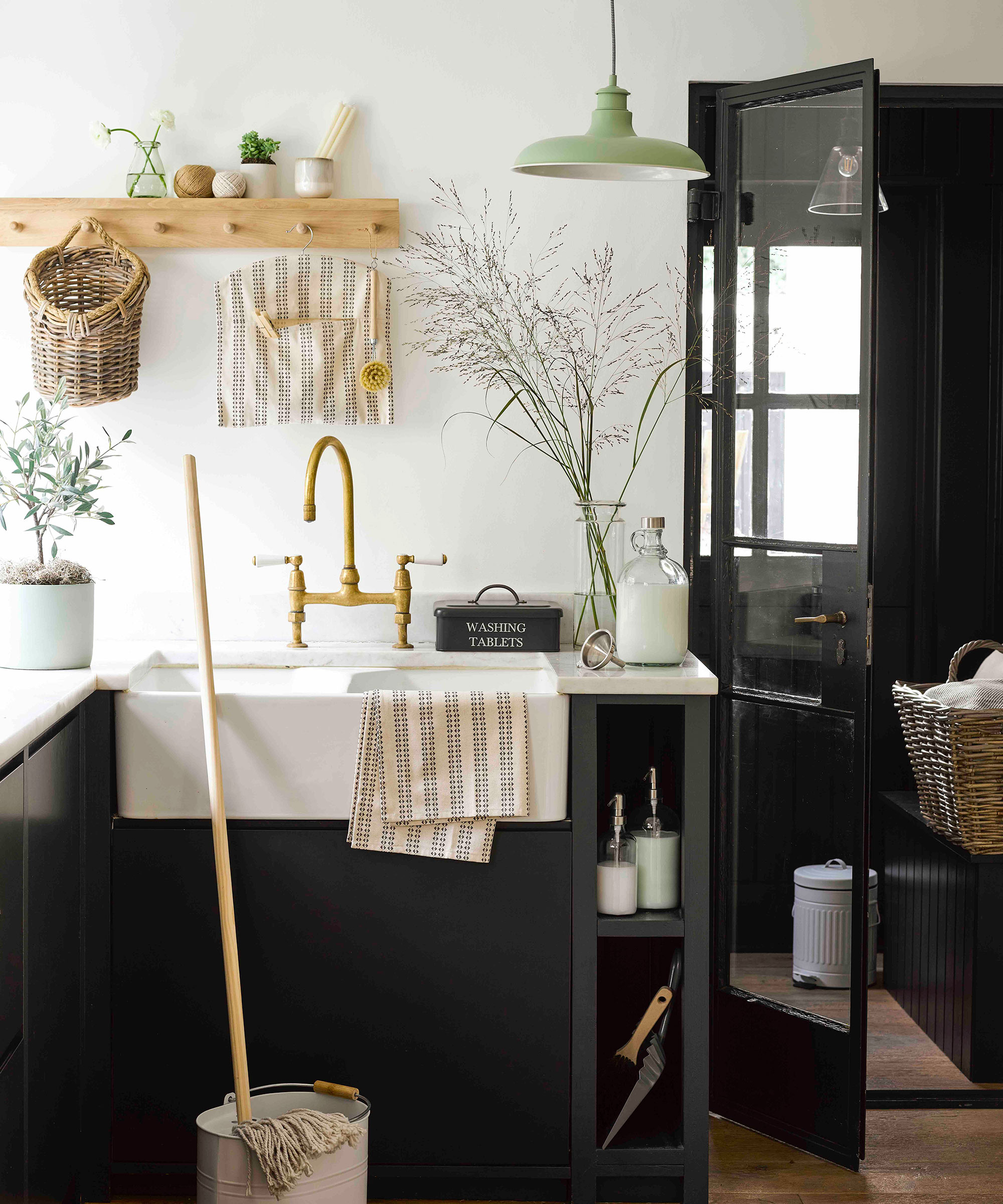
Final verdict: Which one do you need?
Deciding between a steam mop and a regular mop is a difficult one, as they both have their advantages and disadvantages. In fact, it’s impossible to choose between them both, which is why we ultimately believe that having both at your disposal will work in your favour.
This is especially true if you have a variety of different floors in your home but still want to keep everything squeaky clean. By having both on hand, you can make sure that every floor surface gets the attention it deserves without harming it in the process.
This is seconded by Atit Chopra, Product Development Director at Beldray, who says, 'Both traditional and steam mopping will achieve clean floors, however the methods are suited to different floor types, each offering specific benefits.'
'Steam mops effectively remove stains, kill bacteria and sanitise tiles, hardwood and laminate floors without the need for harsh chemicals, making steaming a favoured option for those with pets or allergies.'
'Traditional cloth or flat mops, however, can be used on all types of flooring. They give you more control over water usage, making them a versatile option as they are suitable for even delicate flooring materials such as vinyl.'
FAQs
Is steaming floors better than mopping?
Steaming floors help you tackle dirt, grime, and stains without the use of cleaning solutions, which can be a major bonus. In fact, it’s generally considered that they offer a better and more effective clean than mopping, as the heat and steam generated from this appliance can also kill bacteria in the process.
However, it’s important to realise that it’s not possible to steam all types of floors. If you have unsealed hardwood or laminated flooring, you should avoid steaming them at all costs, as it can affect the integrity of the planks and damage them beyond repair.
What are the cons of steam mops?
One of the biggest cons of steam mops is the fact that they cannot be used on all floor types. You need to be extremely careful when exposing certain flooring to this intense heat and steam, and using a steam mop on the wrong flooring can cause serious damage.
Alongside this, they are also much bigger than regular mops and may be harder to store. Generally, they are also more expensive than regular mops.
Now you know the outcome of the steam mopping vs regular mopping debate, you’ve probably got a hankering to clean your floors…

Lauren Bradbury has been the Content Editor for the House Manual section since January 2025 but worked with the team as a freelancer for a year and a half before that. She graduated with a Bachelor’s degree in English and Creative Writing from the University of Chichester in 2016. Then, she dipped her toe into the world of content writing, primarily focusing on home content. After years of agency work, she decided to take the plunge and become a full-time freelancer for online publications, including Real Homes and Ideal Home, before taking on this permanent role. Now, she spends her days searching for the best decluttering and cleaning hacks and creating handy how-to guides for homeowners and renters alike, as well as testing vacuums as part of her role as the Ideal Home Certified Expert in Training on Vacuums, having spent over 110 hours testing different vacuum models to date!